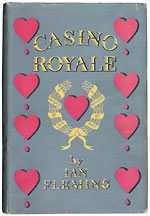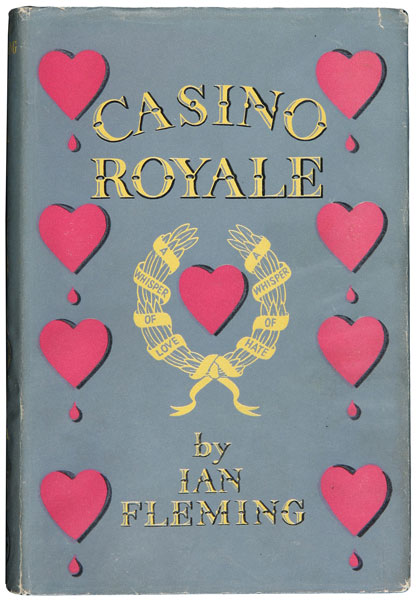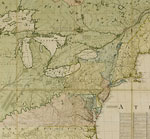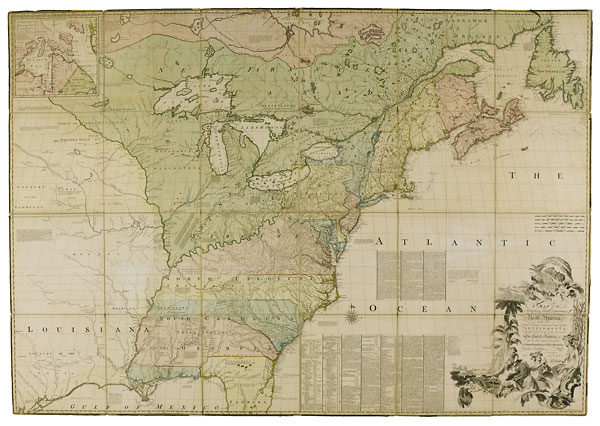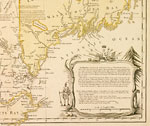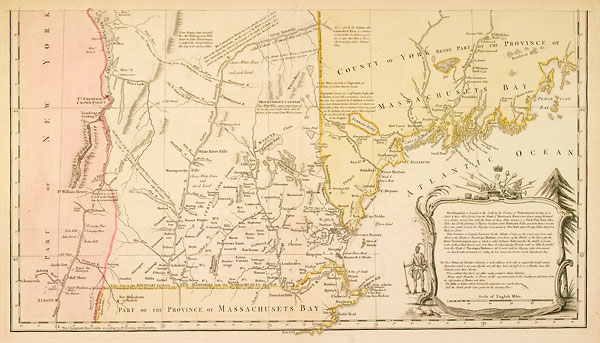Bond Market
First Edition Fleming, PBA San Francisco, $20,400
Ian Fleming’s first James Bond book was published in 1953 with an initial print run of 4,750 copies, a large number of which went to public libraries. Even where they might have survived, used and bruised ex-library copies of Casino Royale, disfigured with accession stamps and the like, are not what collectors want. But to lay hands on a really good copy nowadays, you’re in the five-figure market—even without a presentation inscription.
The copy seen here sold for $20,400 on January 15. In a first issue jacket, distinguished by the absence of a later added review from the Sunday Times (the newspaper on which Fleming worked as foreign manager at the time), this copy was signed only by an earlier owner, but the jacket was a good one and showed only slight edge wear and a faint damp-stain, plus some rippling to the rear panel.
On only one occasion has the first Bond book ever made more without benefit of a Fleming inscription. In 2001, at Christie’s East in New York, a very fine copy in the Henrik Falktoft collection reached $35,250, but then that was an exceptional sale that saw high prices all round.
In London last November, at Christie’s South Kensington, a much, much higher than expected bid of £33,650 ($49,800) was taken on a group of four autograph letters sent by Fleming in the late 1930s and early ’40s to his friend the Honourable Loelia Ponsonby. Then married to the Duke of Westminster, Loelia was the model for 007’s shared personal secretary, and in the early books she actually bears that name. Not until later was her flirtatious nature transferred to the character of Miss Moneypenny.
The letters sold in London are certainly flirtatious—one even ends “P.S. This is a love letter!”—but Fleming, who by then was engaged in his “various nefarious projects” at the War Office, also makes reference to political and military matters: “Winston refuses to join the Cabinet except on his own terms—the Cabinet is terrified at the idea of letting the fox in among the chickens.”
Hair Apparent
A Lock of Lord Byron’s Hair, Sotheby’s London, £3,000
When Byron met his end at Missolonghi, his physician, Dr Francesco Bruno, performed an autopsy and supervised the embalming before travelling with his late patient’s body back to England in the Florida. He also, as was the custom at the time, cut locks of hair as memento mori for the poet’s family and friends.
Bid to £3,000 ($4,650) at Sotheby’s on December 17 was a lock of Byron’s hair, tied with a pink ribbon and accompanied by a wrapper that his friend, John Cam Hobhouse, initialed and authenticated as “A lock of hair cut from the head of Lord Byron after his death by Dr Bruno.”
A later envelope recording the lock’s presentation to a “Miss Marianne Gidley” by “Miss Leigh” may indicate that it was originally given by Hobhouse to the poet’s half-sister, Augusta Leigh. But then it could also have been given to one of her five daughters—one of whom, Elizabeth Medora, believed herself to by Byron’s daughter and who in turn had three illegitimate children, all of whom were Misses Leigh!
One day I must try and compile a Trichological Top Ten, or Top of the Locks price list. In June of last year, for example, UK book auctioneers Dominic Winter sold a well provenanced lock of Jane Austen’s hair for £5,640, or $11,000, at a time when dollar-sterling exchange rates were very different.
Tell it to New Jersey
18th-Century Maps of North America, Sotheby’s NY
Without doubt one of the more important maps in American history, John Mitchell’s A Map of the British Dominions in North America was first issued in London in 1755 and over the following quarter-century it went into 21 editions and impressions in all.
This copy of the third edition (c. 1773) sold for $170,000—four times its estimate—on December 11. John Jay used this edition during negotiations on what, 10 years later, would emerge as the Treaty of Paris, and it continued to be consulted in boundary disputes over the succeeding centuries. As late as 1926 it was brought into use in the Canada-Labrador case and six years later was employed once again as evidence in a Delaware-New Jersey dispute.
Dissected into 24 segments and mounted on linen, this 53 x 77in folding map, still in its original slipcase, was part of a map collection being sold by Charles J. Tanenbaum of New York to benefit his Pine Tree Foundation. The foundation was set up eight years ago to help fund book-related projects, and such august institutions as the John Carter Brown Library, the Library Company of Philadelphia, the Grolier Club and the New York Public Library, have all been awarded grants. The latter recently received an award for preservation work in its map division, but in 2007 a special grant was also made to fund the renovation of a children’s room in a Bronx branch of the NYPL.
Another map that far exceeded its estimate in an end-of-year New York sale was a 1761, Jefferys of London issue of Colonel Joseph Blanchard & the Rev. Samuel Langdon’s An Accurate Map of His Majesty’s province of New-Hampshire…. The two sheets that make up the map were not joined but of equal size and though uniformly coloured in outline, only the lower sheet–that shown here–had been fully coloured up. Estimated at $6,000-9,000 in a Swann’s sale of December 4, it was bid up to $36,000.








 Ian McKay’s weekly column in Antiques Trade Gazette has been running for more than 30 years.
Ian McKay’s weekly column in Antiques Trade Gazette has been running for more than 30 years.